Electric Current | Electric Current Direction and Current Through a Metallic Conductor
Electric current is the flow of charged particles such as electrons and ions moving through a conductor or space. It is measured as the net flow of charge to the surface or control volume.
The presence of current can be detected by the effects of current.
Download the pdf notes of Electric Current and Current Through a Metallic Conductor Class 12 Physics
Electric Current
Electric Charges ΔQ passing through any cross-section of a conductor in time Δt is called Electric Current”
I= ΔQ/ Δt
Unit of electric current
The SI unit of current is Ampere.
The current will be 1Ampere if 1-coulomb charge flows through any cross-section of a conductor in 1 second”.
What are Charge Carriers?
Electric current is due to the flow of charged particles. These charged particles are called Charge Carriers.
There are many charge carriers.
Metal
In metals, charge carriers are negatively charged for example electrons.
Electrolytes
In electrolytes, charge carriers are positive and negative ions for example Cu++ and SO4–.
Gases
In gases, charge carriers are electrons and ions.
Electric current direction:
The current passes from a point at the higher electric potential to a point at the lower if it shows the movement of positive charges. This is called conventional current.
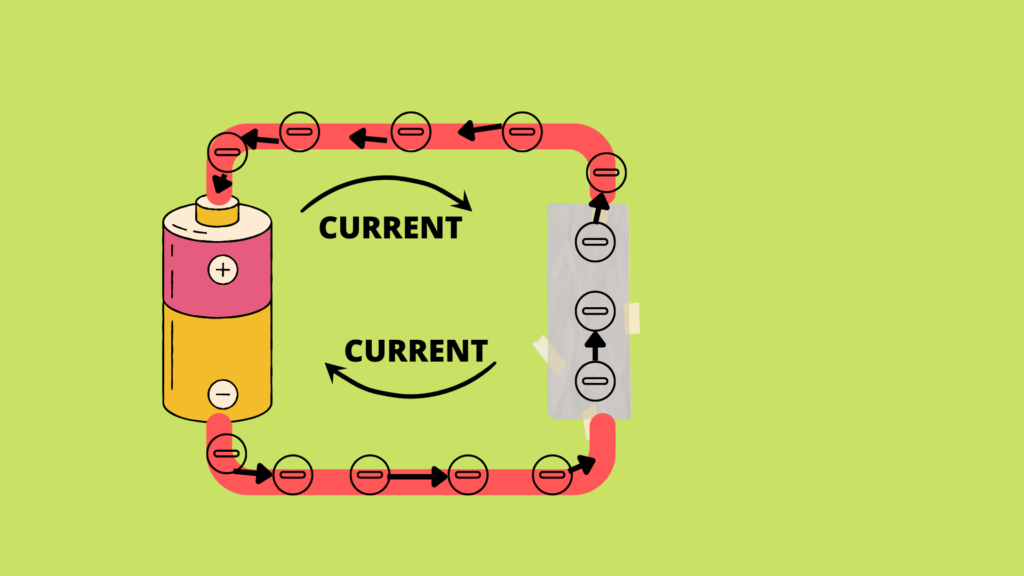
Early scientists regarded an electric current as a flow of positive charges from the positive to the negative terminal of a battery through an external electric circuit.
Later on, it was found that a current in metallic conductors is actually due to the flow of negative charge carriers called electrons moving in the opposite direction from the negative to the positive terminal of the battery.
But it is the convention to take the direction of current as the direction in which positive charges flow this current is called “Conventional Current“.
The reason is that it has been found experimentally that positive charges moving in one direction are equivalent in all external effects to the negative charges moving in the opposite direction.
As the current is measured by its external effects, the current due to the motion of negative charges, after reversing its direction of flow, can be considered as the current flowing due to the positive charges.
Current through a metallic conductor
In metals, the valence electrons are not attached to a particular atom but they are free to move inside the metal these electrons are called “Free Electrons”.
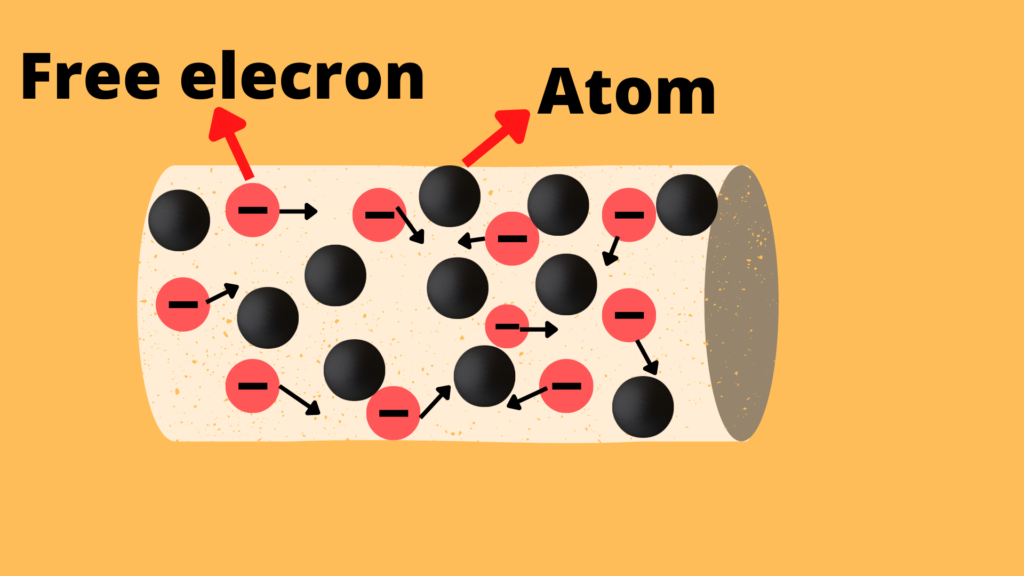
They move randomly inside the metal-like gas molecules. Their speed depends upon the temperature.
Consider a piece of wire. The number of free electrons moving toward the left is equal to the number of free electrons moving toward the right.
So the net current through the wire is zero. If the ends of the wire are connected to a battery, an electric field will be set up at every point within the wire. Now the free electrons will experience a force in the direction of E.
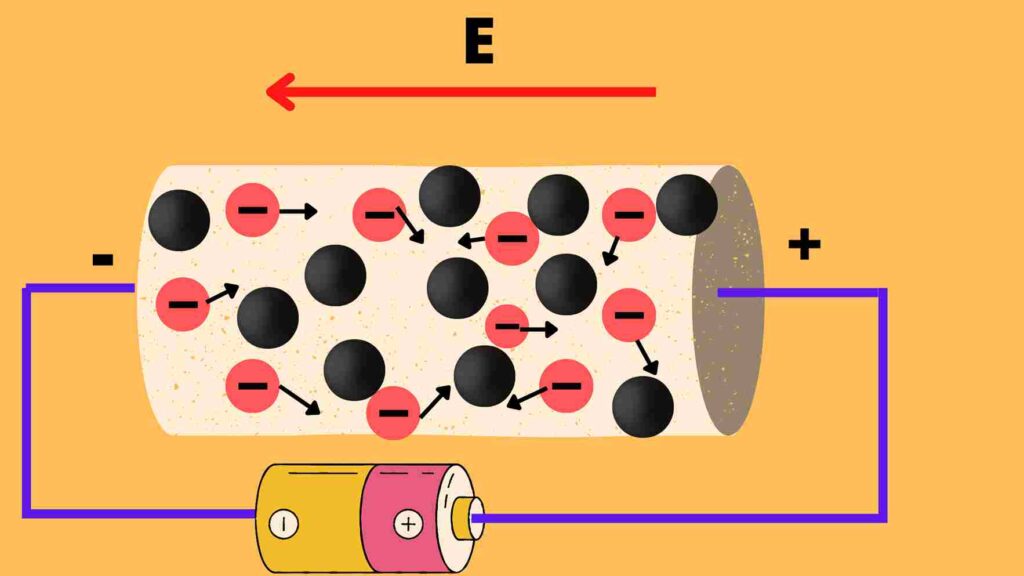
The force experienced by the free electrons does not accelerate due to the collisions with the atoms.
Drift velocity
Due to the collisions of the electrons with the atoms of the conductor, the electrons acquire a uniform velocity called the Drift Velocity.
The value of drift velocity is approximately 10-3ms. Now a steady current is established in the wire when a constant potential difference is applied across it.
Frequently Asked Questions-FQAs
What is the formula of electric current?
The current formula is given as I = V/R. The SI unit of current is Ampere (Amp).
What is Conventional Current?
It is the convention to take the direction of current as the direction in which positive charges flow this current is called Conventional Current.
What is drift velocity?
Due to the collisions of the electrons with the atoms of the conductor, the electrons acquire a uniform velocity called the Drift Velocity.
What is electric current and its types?
Electric current is the flow of free electrons in a conductor. There are two types of electric current.
Alternating current(AC Current)
Direct current(DC Current)

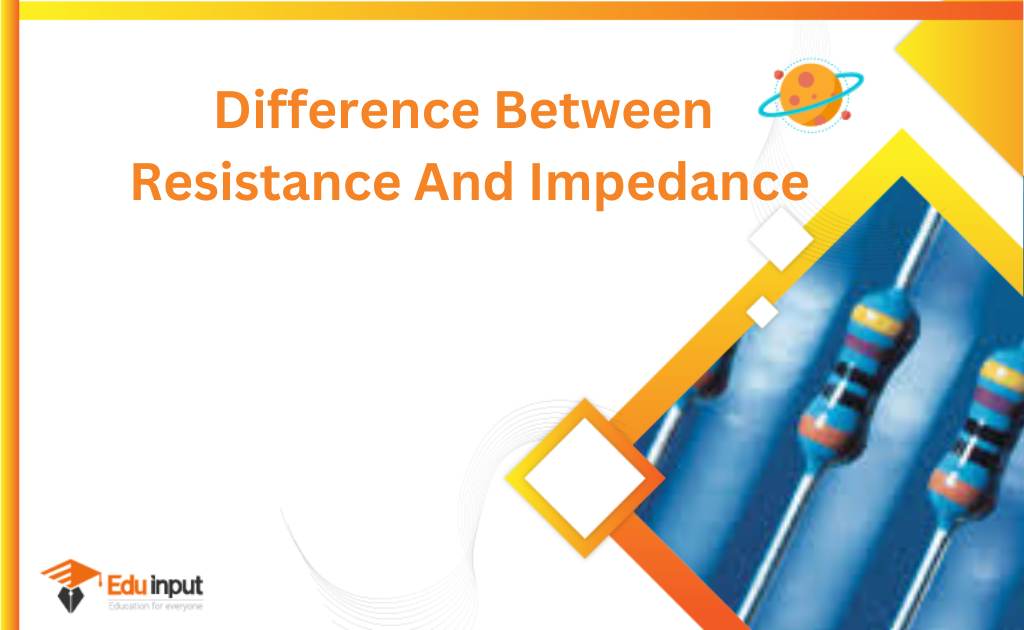

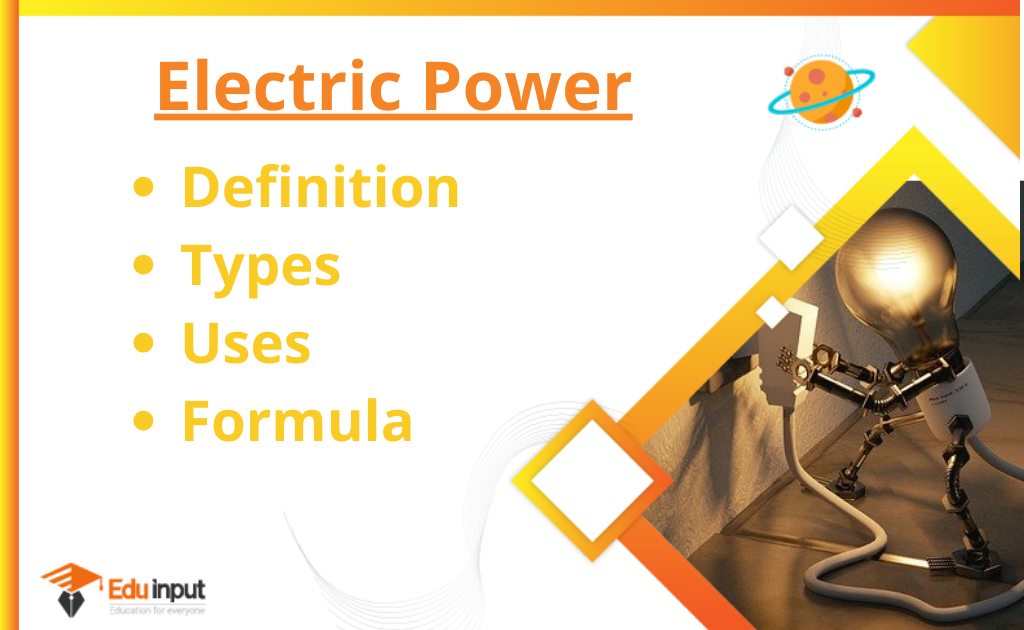



Leave a Reply